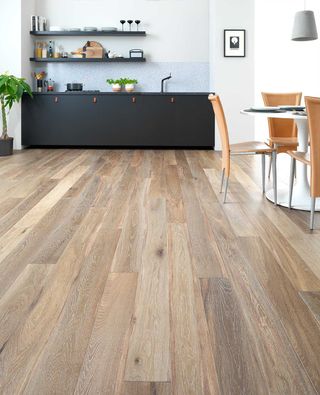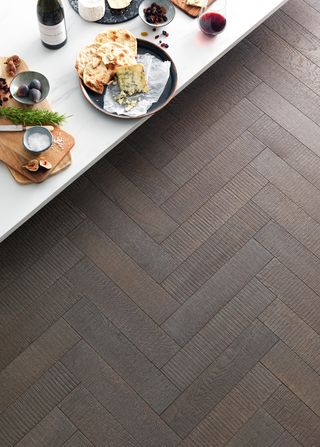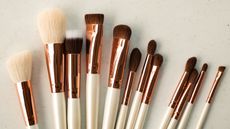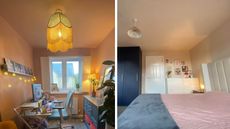Content supplied by Woodpecker
There’s an exacting list of demands for any kitchen floor. It needs to be able to stand up to the footfall in the room, tolerate spills and dropped items, and cope with the heat and moisture of a cooking space. It’s also vital that it’s easy to clean and care for.
If you’re a fan of timber underfoot, the good news is that wood flooring can meet all these requirements, and makes a fabulous option for a kitchen. Both wood and wood-look flooring can be functional choices and bring lasting elegance to the room.
However, not all wood flooring is right for the kitchen – so which designs can you go for? Our guide has all the answers.
Why select wood flooring for a kitchen?
Opting for wood flooring is an easy way to bring warmth to a kitchen scheme. It’s a sound choice in a period home and complements classic kitchen cabinetry beautifully, but it also works in more modern properties. Try it alongside contemporary units to add an appealing natural contrast to schemes featuring sleek, manmade surfaces.
Wood flooring can be an understated backdrop, leaving the focus on units, worktops or splashbacks in the kitchen design, or it can be a more attention-grabbing feature for the room if you choose a patterned design like parquet, interesting texture, or eye-catching colour.
The right wood flooring will stand up to the foot traffic of a hard-working room like a kitchen, and won’t be compromised by the steamy conditions. It’s simple to keep clean, more forgiving of dropped items than some other forms of kitchen flooring, and feels warmer underfoot.
Wood and wood-look flooring can also be compatible with underfloor heating, if you pick the right design. This makes it an option well worth considering for open-plan rooms without walls on which to hang radiators, or if you like the comfort of a heated floor.

Which wood flooring is suitable for a kitchen?
The conditions caused by kitchen activities mean flooring has to be chosen carefully – and this includes wood flooring. Cooking brings about changes in heat and moisture levels that are more extreme than in other rooms, and wood expands and contracts in response to these alterations in the environment.
For this reason, if you want wood or a wood look in your kitchen, either engineered wood flooring or timber-style laminate flooring are the right choices.
Engineered wood flooring is constructed in layers so that it’s stable in the humid environment of a kitchen, and it won’t become distorted over time. If it’s real wood you’re after, but you want your floor to look good for many years to come, a good-quality engineered design should be your go-to choice.
The top layer of a quality engineered wood floor is the same beautiful timber as you’d get with a solid wood floor, so you won’t lose out on good looks, but the structure will ensure the floor doesn’t warp, making it a lasting investment.
Laminate flooring is an appealing alternative if you like the look of wood for your kitchen. It can effectively reproduce the appearance of wood and – with a lower price point – can help your kitchen design budget go further. A laminate from a trusted supplier is hard-wearing, won’t scratch and will retain its appearance for many years to come despite the demands of a kitchen environment.

How to care for wooden kitchen flooring
To keep wood flooring in tip-top condition down the years, pay attention to the features of the kitchen design that can affect its performance, and follow these guidelines to keep it smart and hygienic.
Ensure the kitchen is well-ventilated with an extractor of the right capacity for the size of the room.
Open the window when possible during cooking to help dispel heat and moisture from the space.
Regularly check appliances such as the dishwasher and washing machine to ensure any leaks are speedily dealt with to avoid compromising your wood flooring.
Owner of a traditional floor-mounted oven that produces a lot of heat? Think about laying a tiled hearth around the oven to protect wood flooring from hot spots.
Deal with any spills immediately. Areas around the sink or hob are most likely to be affected, and laying mats in these areas could help.
Consider a lacquered finish for engineered wood flooring for maximum protection of the timber. Lacquer is hard wearing and will help prevent stains and spills penetrating the wood. Prefer an oiled finish? No problem, but be aware that oiled wood will require more frequent cleaning than lacquered, and more regular re-oiling to keep the protective surface doing its job.
Remove any dust and debris from engineered wood flooring and laminate with a soft broom. You can also vacuum it using a suitable attachment or setting, depending on the cleaner model. If you prefer a liquid cleaner, pick a product recommended by your floor supplier and gently mop clean. It’s also important to lay door mats at the entrances to your home to catch dirt before it’s tracked into the kitchen to assist in maintaining the floor.
What styles of wood kitchen flooring are available?
There’s a huge range of choice when it comes to colour, rustic or more contemporary finishes, and board size and layout whether you opt for engineered wood or laminate flooring for the kitchen.
Use these ideas to get the look you’re after for your kitchen when you’re investing in a wood or wood-look floor:

Complement a country-style or classic kitchen with a wood floor with rustic details such as knots, splits and cracks. Handscraping can make boards look aged so picking a wood floor like this for your kitchen can make a room feel comfortable and lived-in even when all the elements are brand new.

Make a small kitchen feel bigger, or a gloomy room feel brighter, with a pale-toned wood, such as a White Smoked Oak. Opting for a lacquered finish can be a sensible strategy here to make keeping the light finish pristine a breeze.

Create a dramatic backdrop to lighter-toned cabinetry and pale walls with a dark wood design. If you’re teaming a wood floor like this with an industrial-style kitchen, going for a reclaimed-style design that has the marks of age and use will work a treat.

Bring in pattern with a parquet wood floor. Geometric designs add a layer of decorative detail that complements a functional space like a kitchen perfectly. Both light and dark-toned parquets are available – opt for the latter if you want a statement floor.

Complete a contemporary kitchen design with wood flooring that’s equally modern in style. Grey-toned wood has on-trend credentials. Look for wide boards to give a room an up-to-date feel, too.


